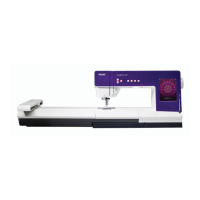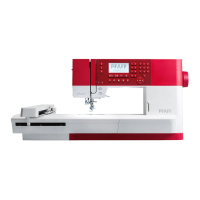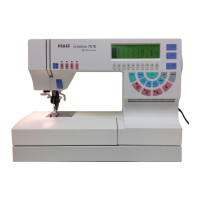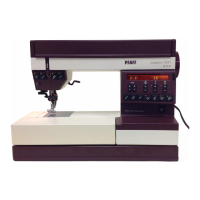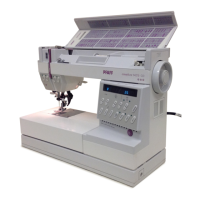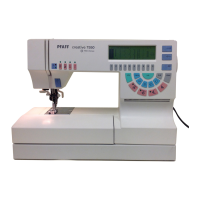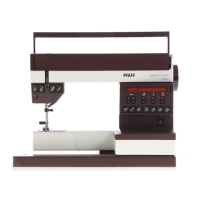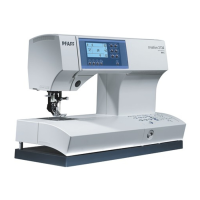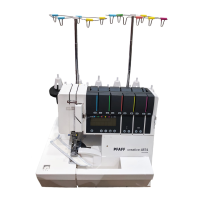4:20
B
A
Sewing mode
Free-motion stippling
Free-motion stippling adds texture and interest to
your quilt, while keeping the layers together.
Free-motion stippling is done with the feed
dogs lowered. You move the fabric manually to
determine the stitch length.
1. Set your sewing machine for free-motion
sewing with a straight stitch. Attach the straight
stitch needle plate. Touch the free-motion
options icon (A) and select one of the three
options.
Note: Read about the different options on page 4:8.
2. Disengage the *%5 system and attach the
correct free-motion foot depending on which
technique you have selected. A symbol of the
foot for the selected setting is displayed at the
top of the screen (B).
3. Begin by pin basting your quilt through all
layers with safety pins, starting from the center
of your quilt and working out. Place a pin every
6-8 inches (15-20 cm).
Tip! Practice stippling on scraps of the fabric and batting
from your quilt. It is important to move your hands at
the same speed as the needle to prevent stitches that are
too long or too short. Maintaining a consistent speed
while free-motion sewing will also help keep stitches even.
4. Begin near the center of your quilt. Take one
stitch and pull the bobbin thread to the top of
the quilt. Take a few stitches right next to one
another to lock the threads. Activate Needle
down.
5. Plan a path for your stitching, then begin
stitching your desired stipple pattern, moving
the quilt as you go. Continue stippling until all
areas of the quilt top are À lled.
Stitch-in-the-Ditch
Stitch-in-the-ditch is another option for joining the
layers of your quilt. Pin baste the layers as described
above. Snap on the Fancy stitch foot 1A with *%5
system and engage *%5system. Stitch in the
seams of the quilt, using the red line on the presser
foot as a guide.
Note: You can also use the optional presser foot, Stitch-
in-Ditch w/*%5 system P/N 820 925 096.
Crazy quilt stitching
Embellish your quilt with decorative stitches from
stitch category 2.4. The stitches can be sewn in a
coordinating or contrasting color, depending on
the desired effect. Decorative threads like rayon
embroidery or heavy cotton threads are sometimes
used.
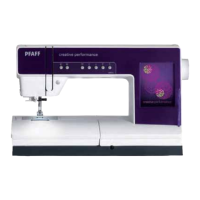
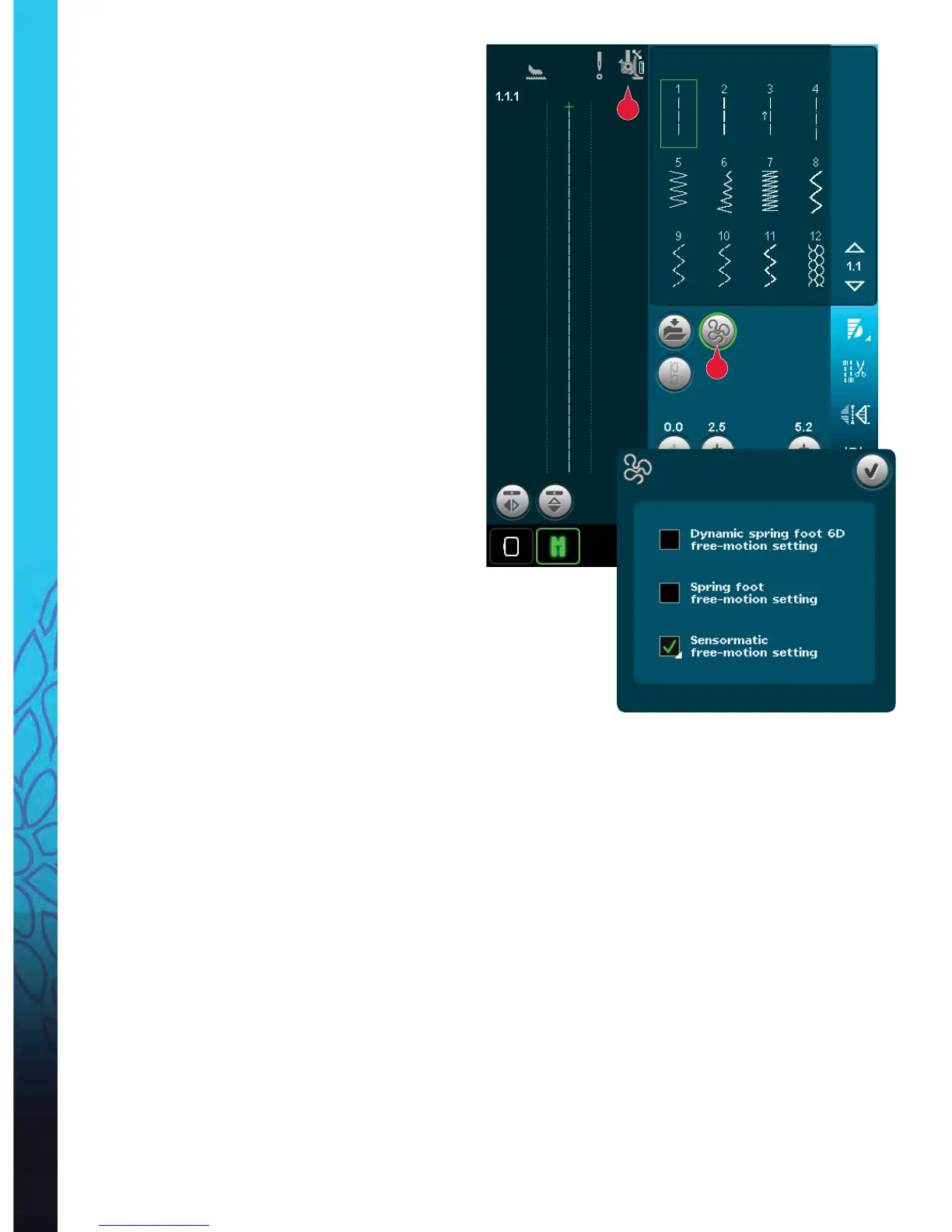